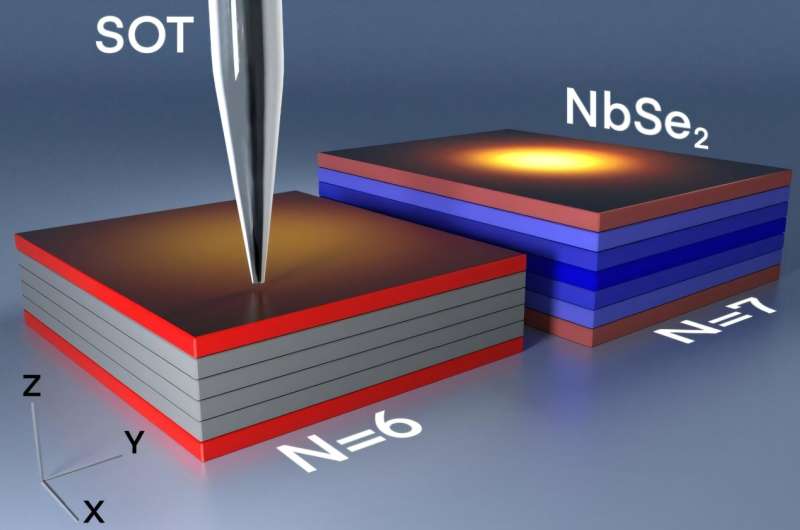Researchers have discovered an unexpected superconducting transition in extremely thin films of niobium diselenide (NbSe2). Publishing in Nature Communications, they found that when these films become thinner than six atomic layers, superconductivity no longer spreads evenly throughout the material, but instead becomes confined to its surface.
This discovery challenges previous assumptions and could have important implications for understanding superconductivity and developing advanced quantum technologies.
Researchers at the Hebrew University of Jerusalem have made a surprising discovery about how superconductivity behaves in extremely thin materials. Superconductors are materials that allow electric current to flow without resistance, which makes them incredibly valuable for technology. Usually, the properties of superconductors change predictably when the materials become thinner; however, this study found something unexpected.
The team, led by Ph.D. student Nofar Fridman, under the guidance of Prof. Yonathan Anahory from the Racah Institute of Physics and the Nano Center at Hebrew University looked closely at thin films made from niobium diselenide (NbSe2), a special type of layered superconducting material, which can be assembled into structures where thickness is precisely controlled down to the few layer limit.
By using advanced magnetic imaging techniques, the researchers measured how these materials respond to magnetic fields as their thickness decreased.
Typically, scientists expect the ability of a superconducting material to expel magnetic fields to become stronger as the material becomes thicker. Here, this length is gauged by a physical property called the Pearl length. This study confirmed that rule for samples thicker than ten atomic layers.
However, when the films became extremely thin—just three to six layers (2–4 nm)—the researchers observed something unexpected: the Pearl length sharply increased and became thickness independent, breaking the expected pattern.
“Our findings reveal something completely unexpected that could be ubiquitous in superconducting materials,” explained Nofar Fridman, the Ph.D. student leading the study.
“In very thin samples, superconductivity behaves differently from what we’ve known. It seems that below a certain thickness, superconductors host current mostly at their top and bottom surfaces, rather than throughout their volume. This finding opens up exciting new questions about superconductivity in ultra-thin materials.”
The team’s supervisor, Prof. Yonathan Anahory emphasized the importance of their method, saying, “Our high-resolution magnetic imaging allowed us to see details that previous methods couldn’t detect.
“By finding this unique surface superconductivity, we’ve expanded our understanding of how superconducting materials behave at extremely small scales. This could have significant implications for future research and technologies.”
This discovery sheds new light on superconductivity in very thin films and challenges previously held theories. It also highlights how specialized measurement techniques can uncover surprising new physical phenomena, potentially opening avenues for innovative applications in quantum technology.
More information:
Anomalous Thickness Dependence of the Vortex Pearl Length in Few-Layer NbSe₂, Nature Communications (2025). DOI: 10.1038/s41467-025-57817-3
Provided by
Hebrew University of Jerusalem
Citation:
The hidden superconducting state in NbSe₂: Shedding layers and gaining insights (2025, March 31)
retrieved 31 March 2025
from https://phys.org/news/2025-03-hidden-superconducting-state-nbse-layers.html
This document is subject to copyright. Apart from any fair dealing for the purpose of private study or research, no
part may be reproduced without the written permission. The content is provided for information purposes only.

